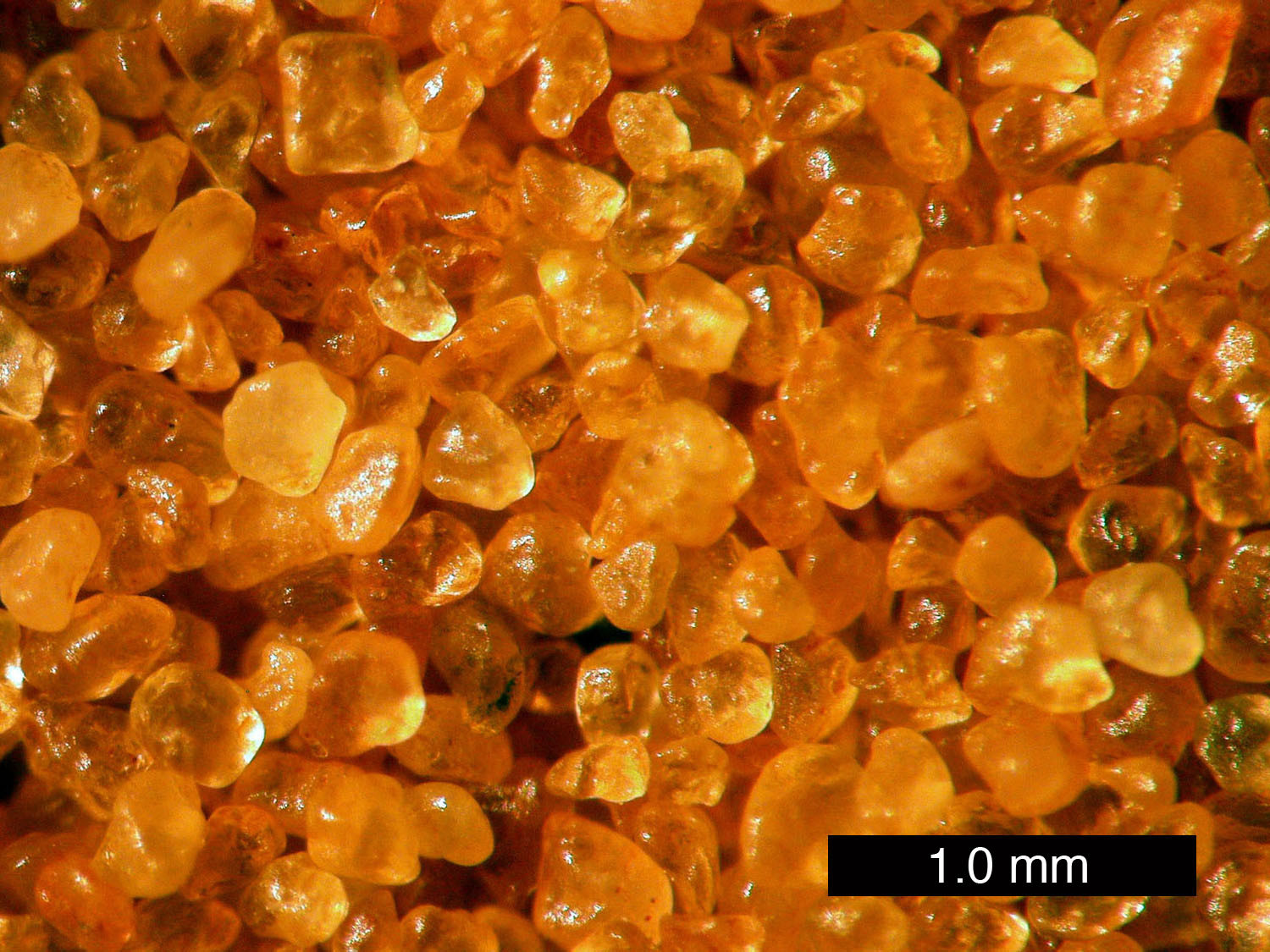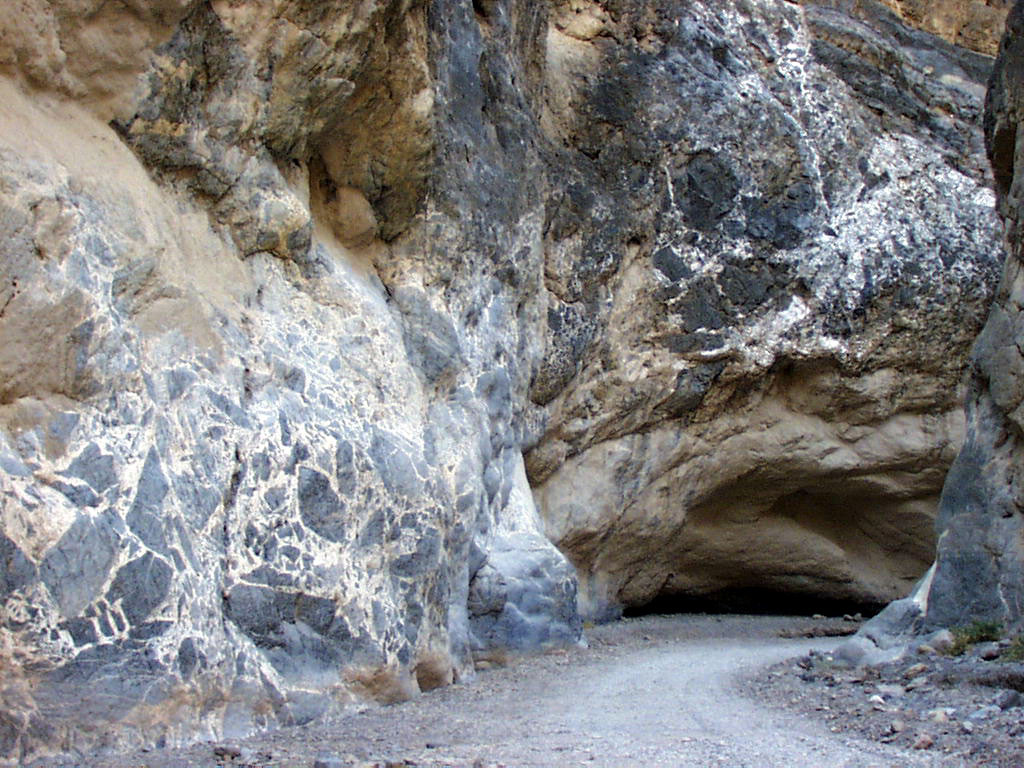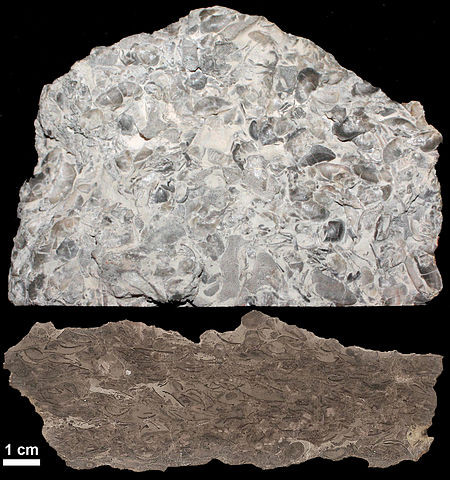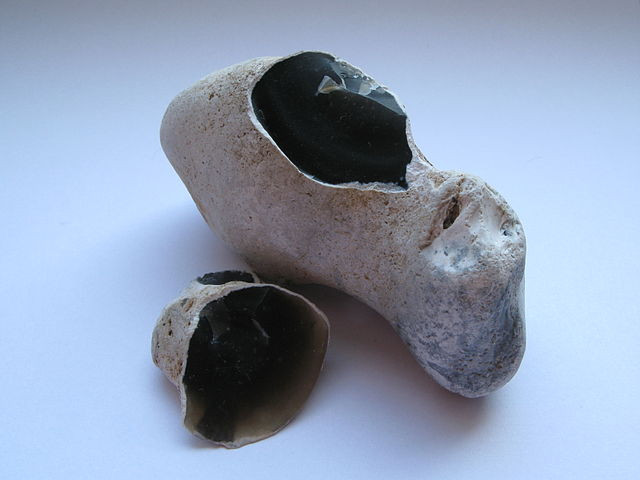Which Process Moves Small Rock Pieces During Sedimentary Rock Formation? Erosion, facilitated mainly by water, is the primary process responsible for transporting small rock fragments during sedimentary rock formation, and at rockscapes.net, we celebrate the beauty and utility of these natural elements in landscaping. This article dives into the intricate details of this process, exploring its mechanisms and significance, and highlighting the stunning possibilities for incorporating sedimentary rocks into your landscape design.
1. Understanding Sedimentary Rock Formation
Sedimentary rocks are formed through the accumulation and lithification of sediments, which are small particles derived from the weathering and erosion of pre-existing rocks. The journey from bedrock to sedimentary rock is a fascinating one, involving several key processes.
1.1. Weathering: Breaking Down the Bedrock
Weathering is the initial step in sedimentary rock formation. It involves the breakdown of bedrock into smaller particles through two primary mechanisms:
- Mechanical Weathering: This involves the physical disintegration of rocks into smaller pieces without changing their chemical composition. Examples include frost wedging (where water freezes and expands in cracks, breaking the rock apart), pressure expansion (where rocks expand and crack as they are uplifted and exposed to lower pressures), root wedging (where plant roots grow into cracks and pry the rock apart), and salt expansion (where salt crystals grow in cracks and exert pressure).
- Chemical Weathering: This involves the chemical alteration of rocks, changing their composition and making them more susceptible to disintegration. Key processes include carbonic acid and hydrolysis (where carbonic acid, formed from carbon dioxide dissolving in water, breaks down silicate rocks to form clay minerals), dissolution (where minerals dissolve in water), and oxidation (where iron atoms in minerals react with oxygen to form iron oxides).
1.2. Erosion: The Transportation of Sediments
What is the most important step to moving sediments? Erosion is the process that moves weathered material (sediment) from one place to another. The primary agents of erosion are:
- Water: Liquid water is the most significant agent of erosion. It transports sediment through rivers, streams, and overland flow. The erosive power of water depends on its velocity and volume, with faster and larger flows carrying more sediment.
- Wind: Wind can transport fine-grained sediments over long distances. This is particularly evident in desert environments, where wind erosion can create sand dunes and other distinctive landforms.
- Gravity: Gravity plays a crucial role in mass wasting processes, where rocks and sediment move downslope due to gravitational forces. Landslides, rockfalls, and soil creep are examples of mass wasting.
- Ice: Glaciers are powerful agents of erosion, capable of transporting large rock fragments as well as fine sediment. Glacial erosion can carve out valleys and leave behind distinctive deposits known as glacial till.
1.3. Deposition: Settling Down
When the transporting agent loses energy, it deposits the sediment. This can happen when a river slows down as it enters a lake or ocean, when wind loses velocity, or when a landslide comes to rest at the bottom of a slope.
1.4. Lithification: Turning Sediment into Rock
Lithification is the process that turns loose sediment into solid rock. It involves two main steps:
- Compaction: As sediment accumulates, the weight of overlying material compresses the lower layers, squeezing the grains together and reducing pore space.
- Cementation: Minerals dissolved in groundwater precipitate in the pore spaces between sediment grains, binding them together to form a solid rock. Common cementing agents include calcite, silica, and iron oxides.
2. The Role of Water in Moving Small Rock Pieces
Why is water so important to moving small rock pieces? Water is the dominant agent in the erosion and transport of small rock pieces during sedimentary rock formation. Its unique properties, such as polarity, cohesion, adhesion, and its ability to act as a universal solvent, make it exceptionally effective at breaking down and moving sediment.
2.1. Types of Water Erosion
How do we categorize water erosion? Water erosion can be categorized into several types:
- Sheet Erosion: This involves the removal of a thin layer of topsoil by overland flow. It is often subtle and can go unnoticed until significant soil loss has occurred.
- Rill Erosion: As overland flow concentrates, it forms small channels called rills. These rills can deepen and widen over time, becoming more pronounced erosional features.
- Gully Erosion: Gullies are larger channels formed by the concentrated flow of water. They can be quite deep and wide, significantly altering the landscape.
- Stream and River Erosion: Streams and rivers are highly effective at transporting sediment. They erode their banks and beds, carrying sediment downstream and depositing it in new locations.
- Coastal Erosion: Waves and currents erode coastlines, removing sediment and reshaping the shoreline. This is a significant issue in many coastal areas, leading to loss of land and property damage.
2.2. Factors Affecting Water Erosion
What can change the water erosion? Several factors influence the rate and extent of water erosion:
- Rainfall Intensity and Duration: Higher intensity and longer duration rainfall events lead to increased erosion.
- Soil Type: Some soils are more erodible than others. Sandy soils, for example, are more easily eroded than clay-rich soils.
- Vegetation Cover: Vegetation protects the soil from erosion by intercepting rainfall, reducing overland flow, and binding the soil together with its roots.
- Slope: Steeper slopes are more susceptible to erosion due to the increased velocity of overland flow.
- Land Use Practices: Agricultural practices, deforestation, and urbanization can significantly increase erosion rates.
3. Sedimentary Rock Types and Erosion
Different types of sedimentary rocks are formed from sediment transported by erosion. Here are a few examples:
3.1. Sandstone
What is sandstone made of? Sandstone is a clastic sedimentary rock composed mainly of sand-sized grains. These grains are typically quartz, but they can also include feldspar and lithic fragments. Sandstone is often formed in river channels, beaches, and desert environments where sand is abundant and erosion is active.
 Sandstone rock formation with visible layers
Sandstone rock formation with visible layers
3.2. Shale
What are shales made of? Shale is a fine-grained, clastic sedimentary rock composed of mud-sized particles. It is often formed in quiet, low-energy environments such as lakes, lagoons, and deep-sea basins where fine sediment can accumulate.
 Shale rock layers in a cliffside
Shale rock layers in a cliffside
3.3. Conglomerate and Breccia
What are conglomerate and breccia rocks made of? Conglomerate and breccia are coarse-grained clastic sedimentary rocks composed of gravel-sized particles. Conglomerate contains rounded clasts, while breccia contains angular clasts. These rocks are often formed in high-energy environments such as river channels and alluvial fans where coarse sediment is abundant.
 Megabreccia rock with a mix of rock sizes
Megabreccia rock with a mix of rock sizes
3.4. Limestone
How is limestone made? Limestone is a chemical sedimentary rock composed mainly of calcium carbonate (calcite). It is often formed in marine environments where organisms such as corals and shellfish extract calcium carbonate from the water to build their shells and skeletons.
 Limestone formation showcasing etched fossils
Limestone formation showcasing etched fossils
3.5. Chert
How is chert created? Chert is a chemical sedimentary rock composed of microcrystalline silica. It is often formed from the accumulation of silica shells of diatoms and radiolarians in marine environments.
 Chert rock with a weathered crust
Chert rock with a weathered crust
4. Incorporating Sedimentary Rocks into Landscape Design
At rockscapes.net, we believe that sedimentary rocks can add beauty, character, and functionality to any landscape design.
4.1. Rock Gardens
How to build a rock garden? Create a stunning rock garden using various sedimentary rocks such as sandstone, limestone, and shale. These rocks provide a natural backdrop for plants and can be arranged to create interesting textures and visual appeal.
4.2. Pathways and Walkways
What are the best rocks for pathways and walkways? Use flagstone or pavers made of sedimentary rocks to create durable and attractive pathways and walkways. These materials are slip-resistant and can withstand heavy foot traffic.
4.3. Water Features
How to incorporate a water feature? Enhance your water features with sedimentary rocks such as river rock and limestone boulders. These rocks add a natural touch and can be used to create waterfalls, ponds, and streams.
4.4. Retaining Walls
Why use retaining walls? Build sturdy and attractive retaining walls using sedimentary rocks such as sandstone and limestone. These walls can help prevent erosion, create level areas in your yard, and add visual interest to your landscape.
4.5. Decorative Accents
How to add decorative accents? Use sedimentary rocks as decorative accents in your landscape design. Place large boulders as focal points, create rock borders around flower beds, or use small pebbles as mulch.
5. Sourcing Sedimentary Rocks for Your Landscape
Why is it important to source good sedimentary rocks? It is essential to source sedimentary rocks from reputable suppliers who follow sustainable quarrying practices. This ensures that the rocks are of high quality and that their extraction does not harm the environment.
5.1. Local Quarries
What are the benefits of using local quarries? Local quarries are a great source for sedimentary rocks. They offer a variety of rock types and sizes, and sourcing from local quarries helps support the local economy.
5.2. Landscaping Suppliers
How do landscaping suppliers help you get the best rocks? Landscaping suppliers specialize in providing rocks and other materials for landscape design. They can offer expert advice on selecting the right rocks for your project.
5.3. Online Retailers
What are the benefits of using online retailers for rocks? Online retailers offer a convenient way to purchase sedimentary rocks. They often have a wide selection of rock types and sizes available, and they can deliver the rocks directly to your home.
6. Maintaining Your Sedimentary Rock Landscape
How can you keep your rocks looking pristine? Proper maintenance is essential to keep your sedimentary rock landscape looking its best.
6.1. Cleaning
How to keep your rocks clean? Clean your rocks regularly to remove dirt, debris, and algae. Use a brush and water or a pressure washer to clean the rocks.
6.2. Sealing
What are the benefits of sealing the rocks? Seal your sedimentary rocks to protect them from staining and weathering. Use a sealant specifically designed for natural stone.
6.3. Repair
What should you do if a rock is damaged? Repair any cracks or chips in your sedimentary rocks to prevent further damage. Use a stone repair kit or consult with a professional stone mason.
6.4. Preventing Erosion
What can you do to keep your rocks from eroding away? Implement erosion control measures to prevent soil loss and protect your sedimentary rock landscape. Use mulch, ground cover, and retaining walls to stabilize the soil.
7. Frequently Asked Questions (FAQs)
7.1. What types of sedimentary rocks are best for landscaping in Arizona?
In Arizona, sedimentary rocks like sandstone, limestone, and flagstone are popular choices due to their durability and aesthetic appeal.
7.2. How does water erosion affect the formation of sedimentary rocks?
Water erosion transports small rock pieces and sediments, which are then deposited and lithified to form sedimentary rocks.
7.3. Can I use sedimentary rocks to build a retaining wall?
Yes, sedimentary rocks like sandstone and limestone are excellent materials for building retaining walls.
7.4. What are the benefits of using sedimentary rocks in my garden?
Sedimentary rocks add natural beauty, prevent erosion, and provide a backdrop for plants in your garden.
7.5. How can I prevent erosion in my rock garden?
Use mulch, ground cover, and retaining walls to stabilize the soil and prevent erosion in your rock garden.
7.6. Are sedimentary rocks suitable for creating water features?
Yes, sedimentary rocks like river rock and limestone boulders can be used to create beautiful and natural-looking water features.
7.7. How do I clean sedimentary rocks in my landscape?
Use a brush and water or a pressure washer to clean sedimentary rocks and remove dirt, debris, and algae.
7.8. What is the role of wind in moving sedimentary rock pieces?
Wind can transport fine-grained sediments over long distances, contributing to the formation of sedimentary rocks in certain environments.
7.9. How does gravity contribute to the movement of sedimentary rock pieces?
Gravity causes mass wasting processes like landslides and rockfalls, which transport rocks and sediment downslope.
7.10. Where can I source high-quality sedimentary rocks for my landscaping project?
You can source sedimentary rocks from local quarries, landscaping suppliers, and online retailers.
8. Conclusion: Embrace the Beauty of Sedimentary Rocks
Erosion, particularly by water, plays a vital role in moving small rock pieces during sedimentary rock formation. These rocks, with their unique textures and colors, offer endless possibilities for creating stunning and functional landscapes. At rockscapes.net, we invite you to explore the beauty and versatility of sedimentary rocks and discover how they can transform your outdoor space into a natural oasis.
Visit rockscapes.net today to explore our extensive collection of sedimentary rocks and get expert advice on incorporating them into your landscape design. Let us help you create a landscape that is both beautiful and sustainable, inspired by the timeless elegance of nature. For personalized assistance, contact us at Address: 1151 S Forest Ave, Tempe, AZ 85281, United States. Phone: +1 (480) 965-9011 or visit our website at rockscapes.net. Discover the possibilities and let your landscape reflect the enduring beauty of sedimentary rocks.